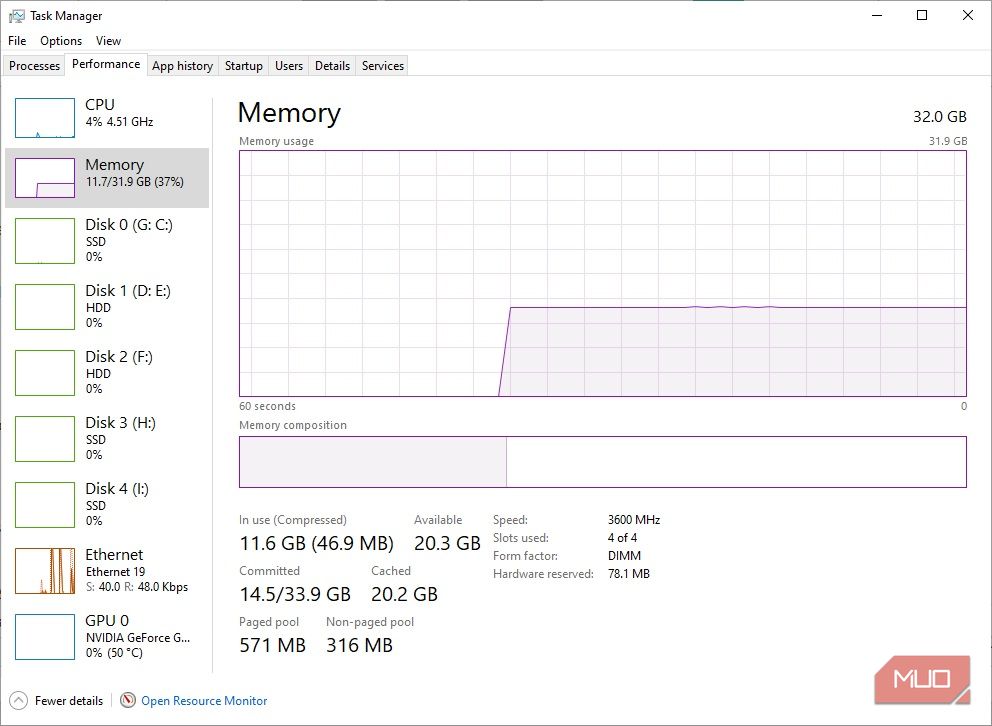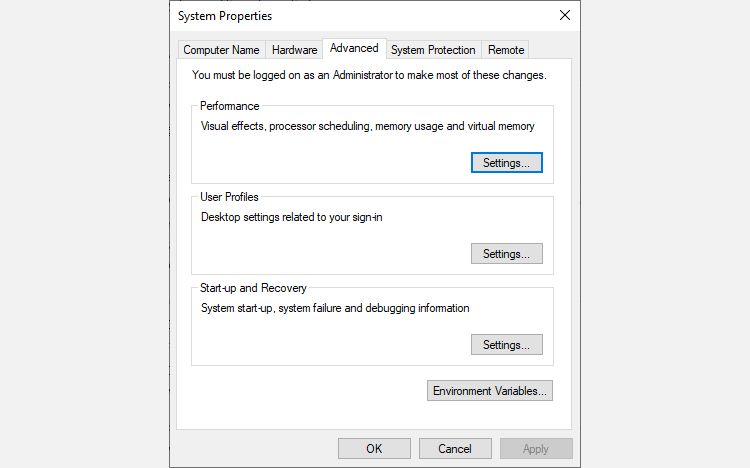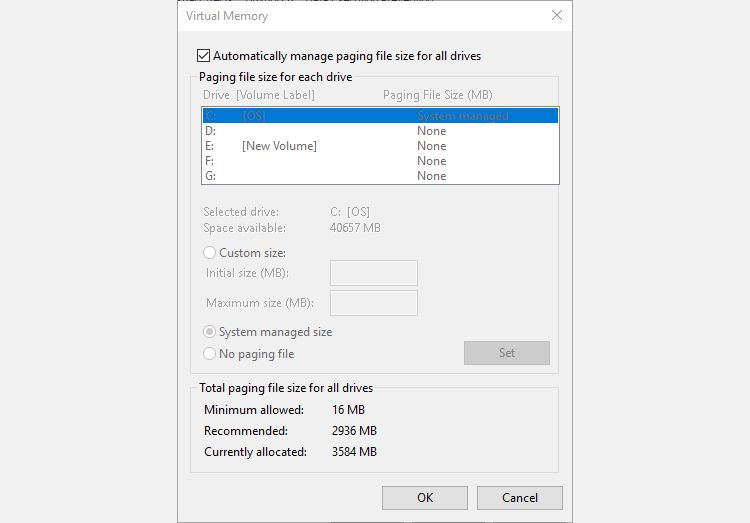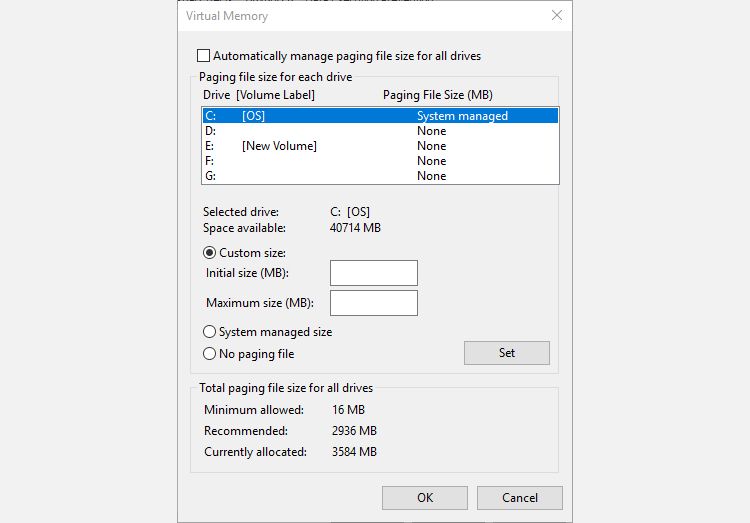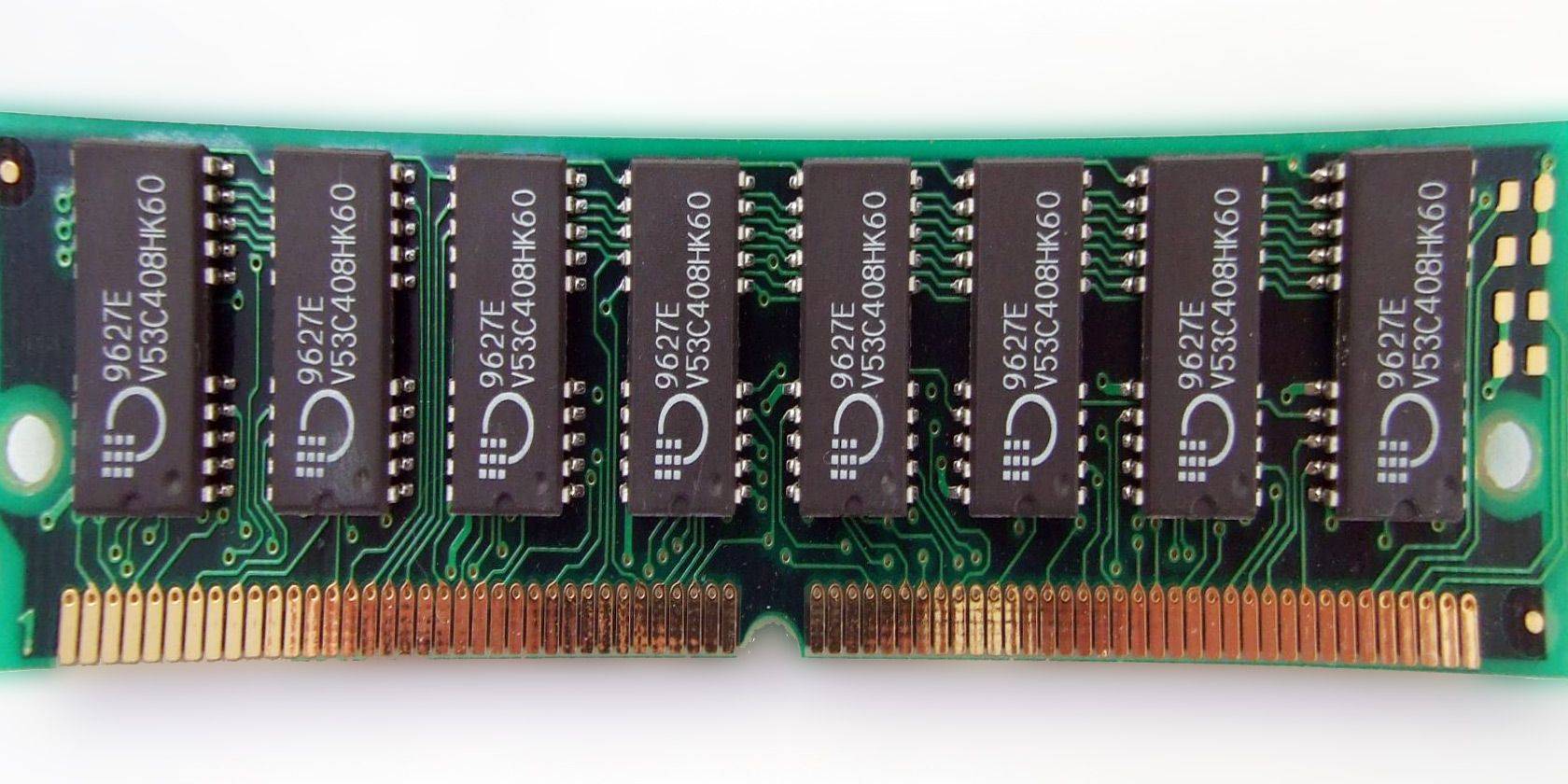
Is Your Virtual Memory Too Low? Here’s How to Fix It!
Table of Contents
Key Takeaways
- Aging hardware and low memory can cause your Windows 10 or Windows 11 system to slow down over time.
- Virtual memory is used by your system to expand the available RAM when memory runs low, but it can impact performance.
- Increasing the size of your virtual memory can help alleviate slowdown issues, but upgrading your RAM is the best solution for improved system speed and performance.
Does your Windows 10 or Windows 11 installation feel like it slows down over time? You’re not imagining it. As the hardware requirements for popular apps increase, your aging hardware suffers.
Often, there is a simple culprit: low memory. If you don’t have enough system memory, your system will slow to a crawl when you attempt to run multiple resource-intensive programs.
Here’s how you fix your Windows 10 or Windows 11 virtual memory size to make those issues disappear.
What Is Virtual Memory?
Your computer has two types of memory: A hard drive or solid-state drive and RAM.
Your hard drive is where your operating system lives, as well as your photos, music, games, documents, and otherwise. Your RAM stores program-specific data. It is much faster but more volatile, acting as a working storage area for the programs and files you have open.
So, what is virtual memory?
Well, if you use all the RAM available to your system, it will utilize virtual memory—also known as a swap or paging file—to provide a temporary expansion. Your system’s virtual memory does this using part of your hard drive memory to effectively expand your RAM. So, this virtual memory is extremely useful. It allows your system to handle more data for programs than previously available.
However, your hard drive memory (and even a faster solid-state drive) is much slower than your superfast RAM, so your performance can suffer.
When your memory runs low, the paging file comes into play. Some data stored in the RAM will move to the paging file, providing additional space for high-speed memory functions.
Running Low on Virtual Memory
If your virtual memory runs low, you will encounter the following message:
Your system is low on virtual memory. Windows is increasing the size of your virtual memory paging file. During this process, memory requests for some applications may be denied. For more information, see help.
Manually increasing the size of your paging file will alleviate this message, as per the error message. Windows sets the initial virtual memory paging file equal to the amount of installed RAM. The paging file is a minimum of 1.5 times and a maximum of three times your physical RAM.
You can calculate your paging file size using the following system. For example, a system with 4GB RAM would have a minimum of 1024x4x1.5=6,144MB [1GB RAM x Installed RAM x Minimum]. Whereas the maximum is 1024x4x3=12,288MB [1GB RAM x Installed RAM x Maximum].
Still, 12GB for a paging file is enormous. I would not recommend using the upper limit. Why? Because once your paging file increases over a certain size, your system will become unstable. In that, the paging file is a temporary fix and shouldn’t be relied upon as an alternative to increasing your physical RAM.
How to Increase Your Virtual Memory
The natural question to ask is, “How much virtual memory do I need?”
Here’s how you increase the paging file size to eliminate the virtual memory error message.
- Head to Control Panel > System and Security > System.
- Select Advanced System Settings to open your System Properties. Now open the Advanced tab.
- Under Performance, select Settings. Open the Advanced tab. Under Virtual memory, select Change. Here are your Virtual Memory options.
Please note that on Windows 11, you can take a less circuitous route to your Advanced System Settings.
- Press Windows key + I to open the Settings app.
- Head to System > About.
- Select Advanced system settings.
- Under Performance, select Settings. Open the Advanced tab. Under Virtual memory, select Change. Here are your Virtual Memory options.
For both Windows 10 and Windows 11, the default option is to Automatically manage paging file size for all drives. Uncheck this to enable the currently greyed-out section below. Select the drive you want to edit the paging file size for. Usually, this is your C: drive.
Now, select Custom size. Set the Maximum size you want for your paging file, following the recommended size for your system. Remember, Windows restricts the paging file size to three times the size of your installed RAM. This is to ensure system stability. Set the Initial size to the Currently allocated size (found below).
Click Set, followed by OK. You have successfully increased your system’s virtual memory size. +1 knowledge for the day!
Please note that Windows doesn’t display a warning for paging file (virtual memory) size increases, but system alerts are shown for decreases. A sudden decrease could cause system damage.
Should You Manually Clear the Virtual Memory?
Increasing virtual memory on Windows is one thing, but what about managing the virtual memory once you use it?
Manually clearing your virtual memory on Windows isn’t typically recommended. If your virtual memory settings are set to System Managed, that’s precisely what will happen. Every now and then, Windows will automatically clear your virtual memory and remove older data that is no longer required. If you frequently clear out your virtual memory, you may find that the programs relying on it fail to work or run out of memory faster, which is essentially the whole reason you’re using the paging file to begin with.
So, in short, you don’t need to manually clear the virtual memory, as Windows will manage its use and allocation. However, if you still want to manage your paging file directly, here’s how you reset your virtual memory.
Other Ways to Increase Your Virtual Memory
If your system still runs slowly following the paging file size adjustment, you must consider upgrading your RAM.
Upgrading your RAM is the only way to increase your virtual memory by increasing the overall memory available to the system. In that, you will alleviate the virtual memory issue during the process and could also boost your system speed.
Upgrading RAM has several advantages over relying on virtual memory:
- Faster system performance: RAM is much faster than virtual memory on a hard drive. More RAM means more data can be accessed at top speeds.
- Increased multitasking: With more RAM, you can comfortably run multiple demanding applications simultaneously. Virtual memory is more limited.
- Improved stability: Large page files can sometimes lead to system instability. Adding RAM reduces dependence on virtual memory.
- Cost savings: Upgrading RAM is a one-time expense that can extend the life of an older system. Relying on virtual memory uses up limited hard drive space over time.
There are countless tutorials, both text and video, to help you through this task, and many can be found specifically for your device. A great place to start figuring out compatible RAM is PC Part Picker.
What Are the Best Virtual Memory Settings?
I’m inclined to leave my virtual memory settings alone. Windows 10 and Windows 11 manage your physical memory and your virtual memory, along with it. If you keep hitting the paging file memory limit, you should consider upgrading your RAM. It will make a world of difference, especially for older systems.

